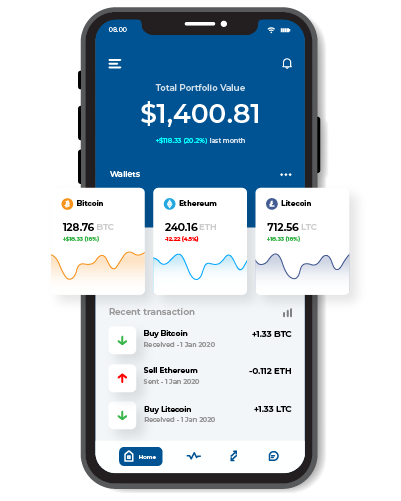What Is a Non-fungible Token (NFT)?
Non-fungible tokens (NFTs) are cryptographic assets on a blockchain with unique identification codes and metadata that distinguish them from each other. Unlike cryptocurrencies, they cannot be traded or exchanged at equivalency. This differs from fungible tokens like cryptocurrencies, which are identical to each other and, therefore, can serve as a medium for commercial transactions.

Key Takeaways
NFTs are unique cryptographic tokens that exist on a blockchain and cannot be replicated
NFTs are unique cryptographic tokens that exist on a blockchain and cannot be replicated.
NFTs can also function to represent individuals' identities, property rights, and more.
Understanding the NFTs
Like physical money, cryptocurrencies are fungible, meaning that they can be traded or exchanged, one for another. For example, one bitcoin is always equal in value to another bitcoin. Similarly, a single unit of ether is always equal to another unit. This fungibility characteristic makes cryptocurrencies suitable as a secure medium of transaction in the digital economy. NFTs shift the crypto paradigm by making each token unique and irreplaceable, thereby making it impossible for one non-fungible token to be equal to another. They are digital representations of assets and have been likened to digital passports because each token contains a unique, non-transferable identity to distinguish it from other tokens. They are also extensible, meaning you can combine one NFT with another to “breed” a third, unique NFT. Just like Bitcoin, NFTs also contain ownership details for easy identification and transfer between token holders. Owners can also add metadata or attributes pertaining to the asset in NFTs. For example, tokens representing coffee beans can be classified as fair trade. Or, artists can sign their digital artwork with their own signature in the metadata. NFTs evolved from the ERC-721 standard. Developed by some of the same people responsible for the ERC-20 smart contract, ERC-721 defines the minimum interface—ownership details, security, and metadata—required for the exchange and distribution of gaming tokens. The ERC-1155 standard takes the concept further by reducing the transaction and storage costs required for NFTs and batching multiple types of non-fungible tokens into a single contract. Perhaps the most famous use case for NFTs is that of cryptokitties. Launched in November 2017, cryptokitties are digital representations of cats with unique identifications on Ethereum’s blockchain. Each kitty is unique and has a price in ether. They reproduce among themselves and produce new offspring, which have different attributes and valuations compared to their parents. Within a few short weeks of their launch, cryptokitties racked up a fan base that spent $20 million worth of ether to purchase, feed, and nurture them. Some enthusiasts even spent upward of $100,000 on the effort. More recently, the Bored Ape Yacht Club has garnered controversial attention for its high prices, celebrity following, and high-profile thefts of some of its 10,000 NFTs. Though the cryptokitties and Bored Ape Yacht Club use cases may sound trivial, others have more serious business implications. For example, NFTs have been used in private equity transactions as well as real estate deals.10 One of the implications of enabling multiple types of tokens in a contract is the ability to provide escrow for different types of NFTs—from artwork to real estate—into a single financial transaction.

News

How to Trade Decentralized Perpetual Swaps on MCDEX
Learn what perpetual swaps are and how to trade these crypto derivatives on MCDEX...

What is the Metaverse? What Role Will NFTs Play In It?
Ever heard of the metaverse? The term has been thrown around a...

Ethereum’s (Remaining) Journey to Ethereum 2.0
Ethereum’s long and arduous journey towards Ethereum 2.0 is slated to successfully end in 2022...

